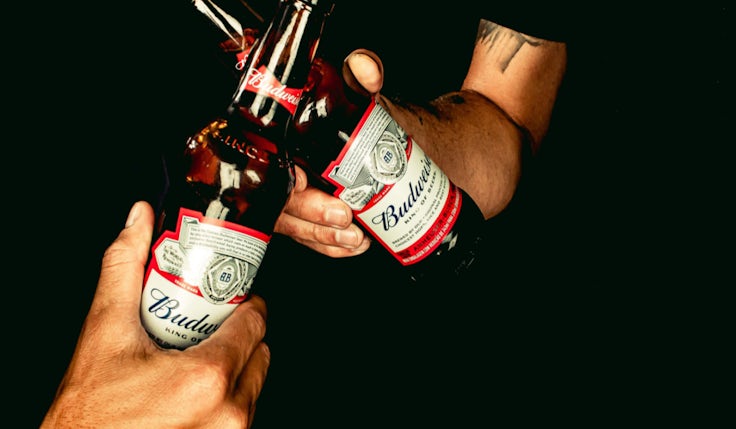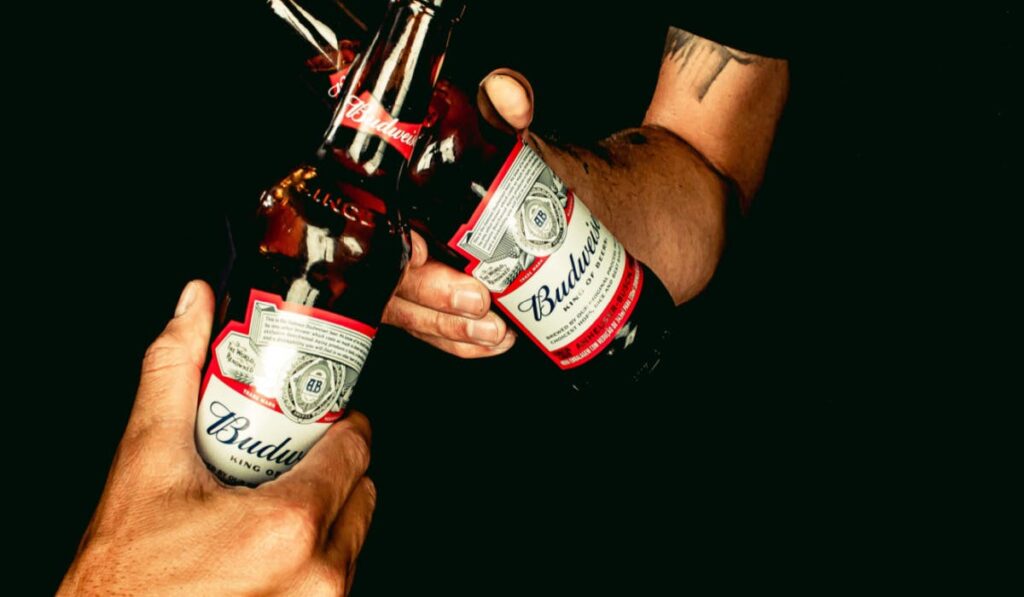
AB InBev’s chief executive says the company determines the level of marketing investment behind its brands not as a set ratio of revenue or total amount of dollars, but by effectiveness and returns.
The company is seeing its “same dollars work much harder” through an increased focused on marketing effectiveness, explained CEO Michel Doukeris. The focus is on driving growth for its “megabrands” through marketing spend, rather than determining a set level of investment.
The beer business, which owns brands including Stella Artois, Corona and Budweiser, reported its financial results for 2024 today (26 February). The company spoke about investing proactively behind its megabrands – the brands driving the most growth in each market.
Across the year, AB InBev’s revenues grew 2.7% year-on-year to $56.77bn (£44.71bn) in 2024. Its marketing and sales investment remained consistent from 2023, at $7.2bn (£5.67bn).
We measure the ratios, we measure the total dollars, but our main leading KPI is effectiveness.
Michel Doukeris, AB InBev
This means that, despite talk of the importance of investment in growing the company’s megabrands, marketing spend as a percentage of sales actually fell, with sales going up and investment remaining at the same level.
“We measure the ratios, we measure the total dollars, but our main leading KPI is effectiveness,” said Doukeris.
A more focused approach to investment across AB InBev’s brand portfolio has been one pathway to achieve improved effectiveness, he claimed. The company has pursued portfolio rationalisation, scrapping some products and making the decision to focus investment on its megabrands.
‘Fewer things with intensity’: Brands on embracing the fear of doing less
The business is “putting more weight in less brands” in terms of how it allocates its marketing spend, Doukeris added, which is, in turn, making that investment more impactful.
AB InBev also claims to have stepped up the effectiveness of its execution. In particular, Doukeris highlighted increased agility in how the company activates its campaigns and more concentrated resources. He also cited improved data capabilities.
“We have elevated our game massively in terms of data and through DTC we have much more data today that we leverage with Draftline, our internal agency, so we can target better,” Doukeris said.
Activating a global marketing effort
With over $7bn in marketing budget and a presence in markets across Europe, Asia, North and South America, AB InBev has to think carefully about how it activates globally.
The leadership was asked by an investor about how the company activates globally while maintaining local relevance. Doukeris pointed to the megabrands, which are particular to each market, rather than being globally consistent.
AB InBev’s focus on these megabrands is paying off, he claimed, citing increasing brand power, as well as increased revenue. These brands grew revenue 4.6% versus the year prior.
‘A larger voice’: How brands are better aligning global and local teams to avoid waste
AB InBev is also leveraging its organisational scale through what it terms “mega platforms”. These platforms can be events like the Olympics, or broader themes like music or food.
“We are getting megabrands, mega platforms and all the data that we are generating with our digital products to create a process, a one ABI way of marketing that can be used and deployed across all markets,” Doukeris said.
This has created a “simple” common process across the organisation, he said, while at the same time allowing each market to maintain relevance to their local consumer.
Growing the category
AB InBev is the world’s biggest brewer and as such is responsible for growing the category, as well as its own brands.
“We believe beer has a long runway for future volume growth and premiumisation,” Doukeris asserted.
The company saw a volume decline of 1.4% in the year, which it attributed to a weak consumer environment in the Chinese and Argentinian markets. However, AB InBev remains upbeat about opportunities to recruit consumers into the category.
AB InBev CMO: Olympics partnership will ‘strengthen’ beer as a category
The business highlighted successes in 2024 with consumers who have newly reached the legal drinking age, as well as in India and Africa, where there is a chance to tap into growing markets.
The company also sees opportunity for category growth through its low and no-alcohol portfolio.
“We are the leader in no-alcohol beer in many of our key markets, including the US, Brazil and Belgium, and see significant headroom for future growth,” the beer giant said.


